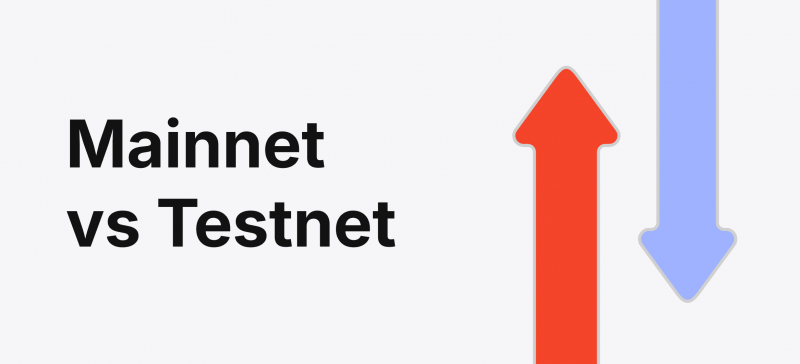Blockchain technology, since its inception, has been shrouded in mysteries and riddles that are not the easiest to solve. As a complex system of interconnected elements, each blockchain has a distributed registry, data accessed by different nodes that contain information about on-chain vs off-chain transactions. But how do such transactions work, and what is their difference?
This article sheds some light on what on-chain and off-chain transactions are and their advantages, disadvantages, and distinctive characteristics.
Key Takeaways
- On-chain transactions take place directly in the blockchain, are written and verified using its mechanisms, and are considered completed only after the appropriate modification of the blockchain.
- Off-chain transactions take place on the cryptocurrency network but off the blockchain. They are very cheap, and because of this, they have been gaining popularity in large networks.
- On-chain transactions may be better for those looking for security, verification, and immutability, while off-chain transactions tend to be better for those looking for fast, low-cost, and private transactions.
What is a Distributed Blockchain Registry?
A distributed registry is a database distributed among several network nodes or computing devices. A distributed registry is a database distributed over the network between its participants (nodes). Each participant may have an identical personal copy of the distributed registry database.
Nodes are updated independently of each other. Everyone is informed when changes are made to the registry. Distributed registry technology significantly reduces trust costs. Using a distributed registry helps reduce reliance on banks, government agencies, lawyers, notaries, and regulatory agencies.
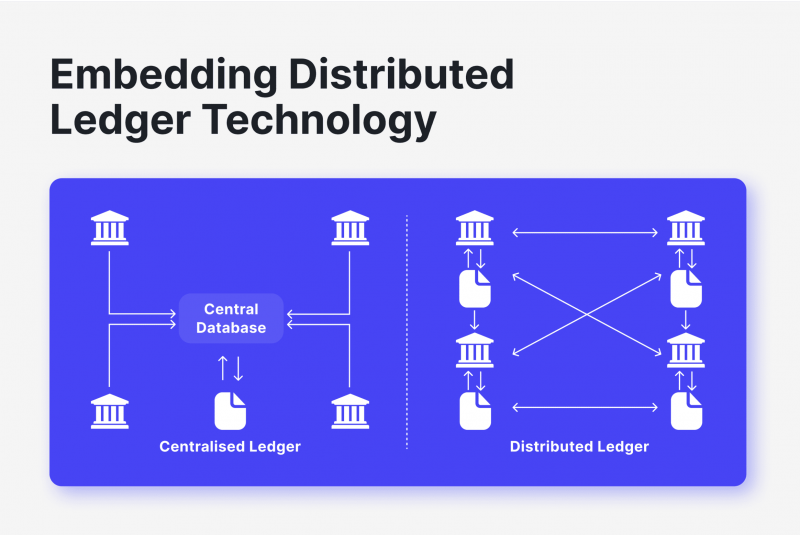
The key feature of a distributed registry is that there is no single control centre. Each node makes and writes registry updates independently of the other nodes. The nodes then vote on the updates to ensure that most nodes agree with the final version.
Voting and agreeing on one copy of the registry is called consensus, a process done automatically by a consensus algorithm. Once consensus is reached, the distributed registry is updated, and the last agreed version of the registry is stored in each node.
Distributed registries represent a new paradigm for collecting and transmitting information. They can fundamentally change how individuals, businesses, and government agencies interact.
A distributed registry can be described as a registry of transactions or contracts maintained in a decentralised form in different locations and among different people, eliminating the need for a central authority to check against manipulation.
Thus, no central authority is needed to authorise or validate any transactions. All information in the registry is stored securely and accurately using cryptography and can be accessed using private keys and cryptographic signatures. Once the information is stored, it becomes an immutable database governed by network rules.
According to statistics today, despite the rapid development of decentralised finance, on-chain transactions are more popular because of their security.
What are On-Chain Transactions?
To understand what on-chain means, it’s necessary to consider blockchain. On-chain (blockchain transactions) are cryptocurrency transactions that occur directly on the blockchain and are recorded and verified using its mechanisms. All such transactions are considered to have occurred only after appropriate blockchain modification.
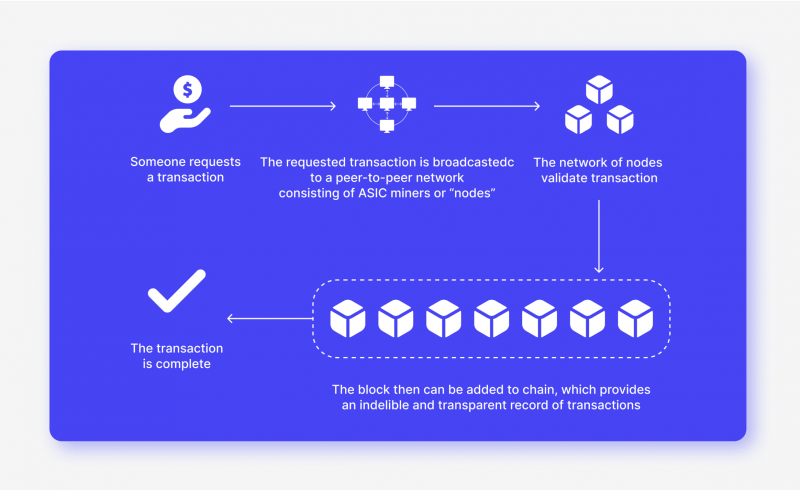
Such transactions are irreversible, either due to a sufficient number of confirmations from network participants or through a special consensus algorithm. They can also be cancelled only if the consensus of the participants possessing most of the network’s hashing power is achieved.
On the other hand, on-chain crypto transactions are not free – miners charge a transaction fee for providing verification and authentication services to validate the transaction patterns within a certain time frame using on-chain analytics. Sometimes, if the network does not scale well and there are many transactions, this fee can be high.
On-chain transactions become realised (and irreversible) only when more than 51% of the network members agree that this is correct and the registry is fully up-to-date. For a transaction on the network to be completed, the miners must receive an agreed number of confirmations.
The time it takes to perform an on-chain transaction is also affected by network congestion. Therefore, sometimes transactions are delayed if a large volume of transactions needs to be confirmed. However, transaction processing can be faster due to the user paying a higher fee.
Advantages of On-Chain Transactions
Each type of transaction, whether on-chain or off-chain, offers its own set of strengths and weaknesses that embody its essence and concept.
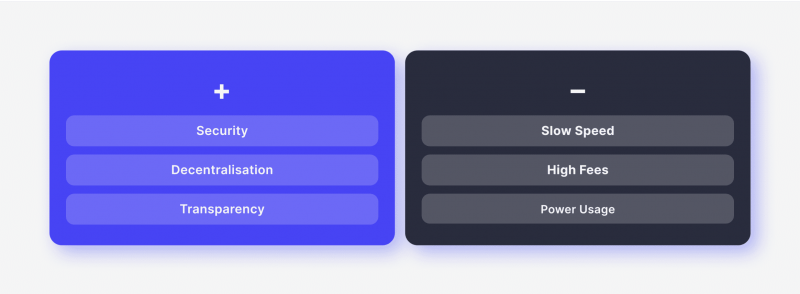
Security
Onchain crypto transactions offer a high level of security that allows you to work with them without thinking about hacking attacks. The data stored in the blockchain is fully encrypted and cannot be changed after recording, which a priori avoids any kind of manipulation, theft, or extortion.
Thanks to the strong protection that such transactions provide, the level of trust of users increases, and consequently, their popularity grows.
Decentralisation
Blockchains are not subject to a central authority, meaning there is little to no risk of an intermediary breaching trust or manipulating the data flow. Any on-chain transaction is subject to a set of rules of the decentralised system in which it is processed.
Thus, it excludes the possibility of involving a third party to change its properties or parameters. This advantage is closely related to security because the decentralised nature of the distributed ledger allows for minimising the likelihood of hacking transaction data, which can lead to the theft of assets.
Transparency
Using a distributed ledger means that transactions are recorded and verified in multiple places. Using the blockchain explorer, anyone can trace a transaction to a unique wallet address and view its activity, allowing independent verification of any metric associated with on-chain transactions.
The transparency of transactions also increases users’ trust because they will have access to important data in the hash – the checksum of any transaction reflecting its purpose and other characteristics.
Disadvantages of On-Chain Transactions
Now, let’s move on to the main disadvantages of on-chain transactions.
Slow Speed
The number of transactions waiting to be processed on a blockchain can affect transaction speeds, which might clog the network. Due to the large loss in blockchain efficiency caused by excessive network congestion, transaction processing is typically sped up by making enhancements to certain parts of the blockchain system.
High Fees
When transaction volume is high, network charges also rise. At times of high demand, network usage can become extremely expensive. Since miners (validators) are paid for validating each transaction in proportion to transaction volume, increasing blockchain bandwidth can help reduce transaction fees many times over, thereby reducing the burden on validators in the network.
Power Usage
Speaking of on-chain transactions, it is worth mentioning that the Proof-of-Work consensus process of mining uses a large amount of processing power and energy. Each transaction requires a certain amount of processing power, which is extracted by mining the cryptocurrency when a new block is mined.
What are Off-Chain Transactions?
Off-chain transactions take place on the cryptocurrency network but off the blockchain. They are very cheap, and because of this, they have recently been gaining popularity in large networks.
Compared to on-chain transactions, off-chain transactions are much simpler. Such transactions are considered valid when the blockchain changes the transaction data.
Before this change, it is verified and validated by a specific number of participants, after which information about it is written in another block and transmitted to all participants in the network, making it virtually irreversible.
Off-chain transaction agreements are made outside the blockchain network. The protocol used for off-chain transactions is similar to that used on payment platforms like PayPal.
The parties involved can enter into an agreement off the blockchain. The next step involves a third party whose role is to confirm the completion of the transaction and verify that the agreement has been honoured. This makes the third party a guarantor in the transaction.
This is the model most decentralised exchanges adopt today, where the exchange plays the role of escrow. It provides the platform and the rules for transactions. Once the parties agree on terms outside the blockchain, the actual transaction is executed on the blockchain.
Codes or coupons can often be accepted during off-chain transactions. These are redeemable codes or coupons that can be exchanged for crypto assets. A third party owns the codes or coupons and is responsible for redeeming them at the right time.
Advantages of Off-Chain Transactions
Just like on-chain transactions, off-chain transactions have impressive strengths.
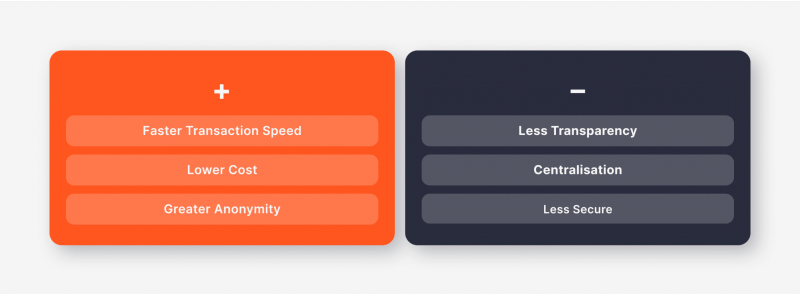
Faster Transaction Speed
Compared to the on-chain type, transactions outside the blockchain network are faster and faster to process. Because of the nature of these transactions, where there is no need to wait for confirmation from the blockchain, transactions can go all the way from the sender’s wallet to the recipient’s wallet instantly, unloading the network.
Lower Cost
Transactions that are confirmed outside the blockchain are more efficient and require minimal fees since they do not require a confirmation process based on mining or staking.
This feature is especially useful when dealing with large amounts of cryptocurrency and other crypto assets on both centralised and decentralised systems.
Greater Anonymity
Because all off-chain transaction data is completely private and not publicly available, this increases its anonymity and hides important sensitive information such as the sender or recipient’s name, the amount sent, and any other transaction checksum data, which is the most important part of a transaction.
Disadvantages of Off-Chain Transactions
Now, let’s move on to the main disadvantages of off-chain transactions.
Less Transparency
Compared to on-chain transactions, off-chain transactions that take place offline do not follow the same protocol as blockchain, which opens up more opportunities for disputes and disagreements due to the inability to know many indispensable data hidden due to various kinds of restrictions.
Centralisation
Off-chain transactions are usually centralised; the entity that submits the data can deny access, destroy the data, or simply cease functioning. Complex layers and architecture can keep off-chain transactions decentralised, although there is no guarantee that the data can be kept forever because it is not on the blockchain.
Less Secure
Because off-chain transactions are processed outside the blockchain (even though they belong to it), and information about them is not stored within the network, their security is significantly reduced.
This approach only writes the start and end result of a transaction to the blockchain; all other transaction validation activities take place off the blockchain, compromising the transaction data’s integrity.
On-Chain vs Off-Chain Transactions: Key Differences
What’s the difference between on-chain and off-chain transactions? Despite the similar name, these types of transactions have a number of distinctive differences, both in terms of their application and on a number of characteristics conditioning their work.
Transaction Process
All pertinent data is time-stamped with on-chain transaction data and kept on the public ledger. Based on the blockchain network’s consensus technique (such as Proof-of-Work or Proof-of-Stake), the blockchain network’s computers (or nodes) validate these transactions.
Verifying transactions and adding new blocks to the chain can use significant processing resources in PoW blockchain networks. The intense energy needed severely pollutes the environment and hastens global warming.
On the other hand, it is feasible to carry out off-chain transactions utilising typical third-party guarantors, layer-2 solutions (which try to address the scalability difficulties present in the blockchain) that are specifically created to lessen the pressure on the primary blockchain. The Liquid Network and the Lightning Network are two examples of those solutions.
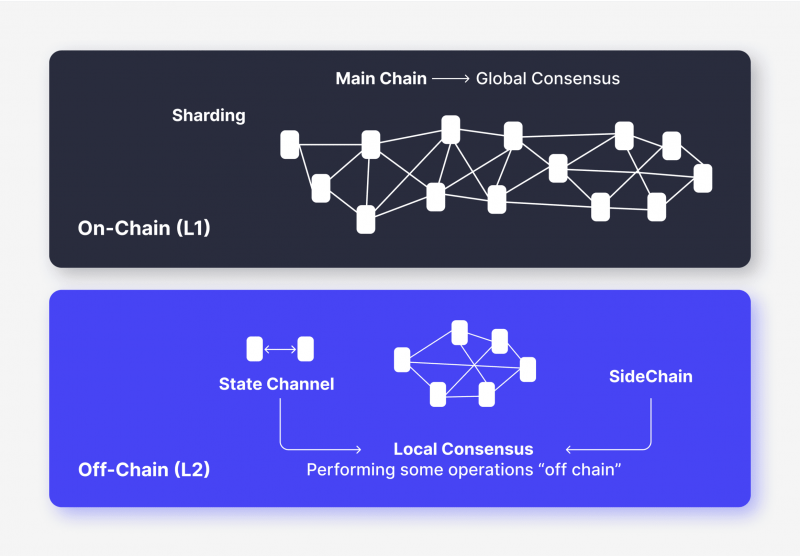
Transparency and Security
On-chain transactions are extremely secure and transparent since they are time-stamped and recorded, making it impossible for anyone to change or undo them. Off-chain transactions have varying levels of security depending on how they are carried out.
Involved parties will establish a side channel utilising a layer-2 solution (such as the Lightning Network). The side channel will be closed once the transaction is finished, allowing the main blockchain to record the transaction.
Other off-chain transactions might not leave a trace behind them to help either party involved in the transaction in case of a dispute.
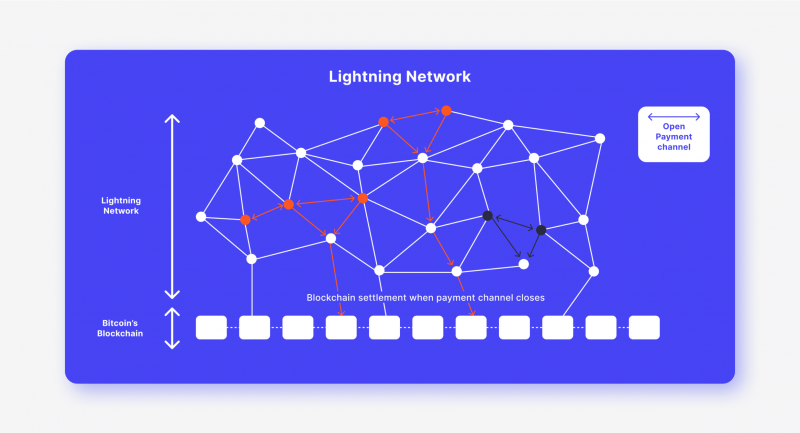
On-chain transactions provide a higher level of openness, but anonymity suffers. It is possible to partially identify the people involved thanks to the transaction patterns because the specifics of on-chain transactions are safely stored inside a publicly distributed ledger.
Off-chain transactions, in comparison, offer greater anonymity because they aren’t visible to everyone. Even off-chain transactions carried out with layer-2 solutions, which may leave a trace on the main chain, are encrypted and unavailable until the chain is closed, maintaining the parties’ confidentiality.
Conclusion
On-chain vs off-chain transactions are two different technologies within the development of blockchain networks that, with their unique characteristics, offer the same tool for dealing with crypto assets – the ability to transfer value expressed in crypto assets between different wallets while still being able to view transaction data and track its status.
Thanks to the development of blockchain networks, these models have become widespread, but only time will tell which one will dominate in the future.









